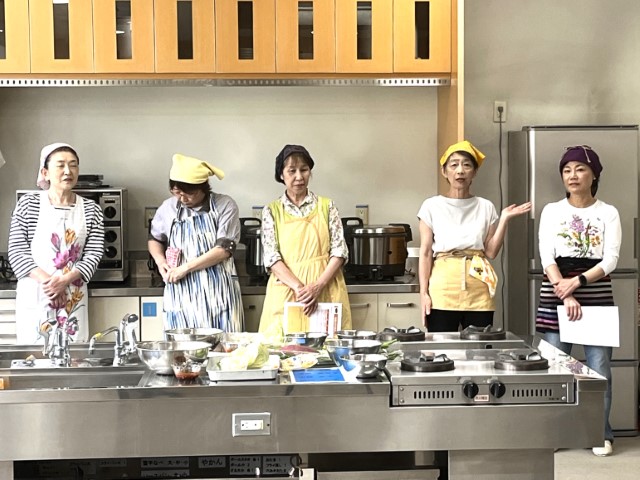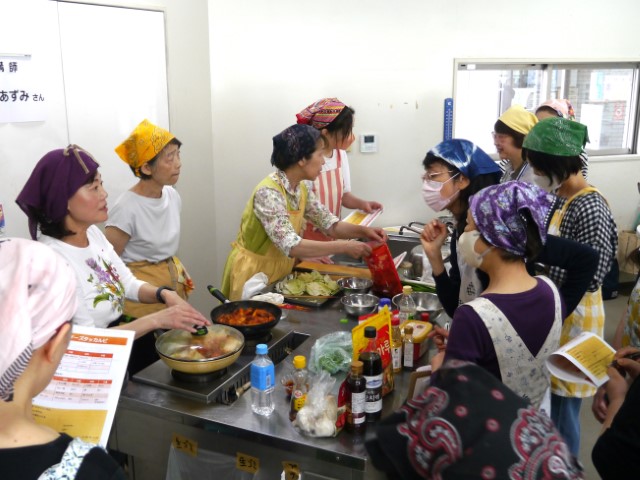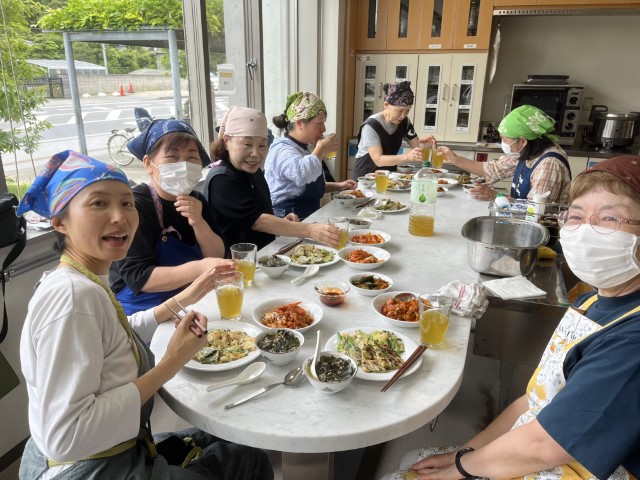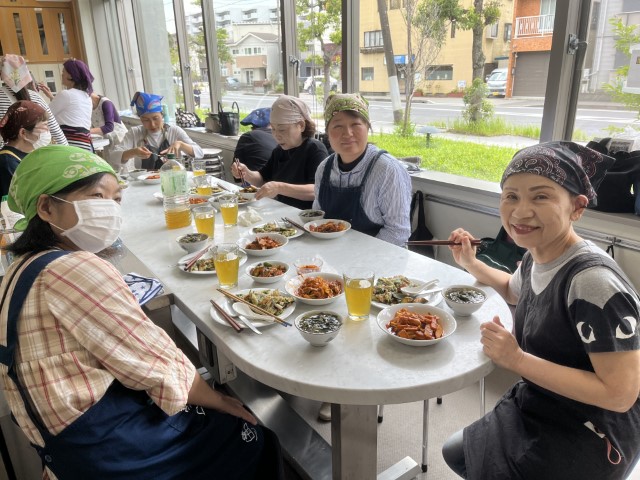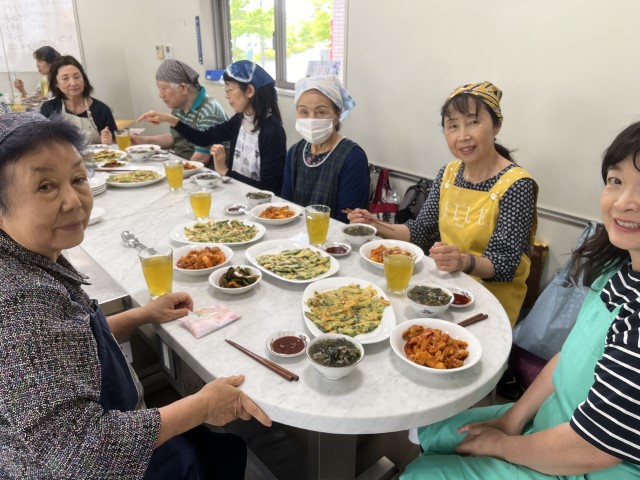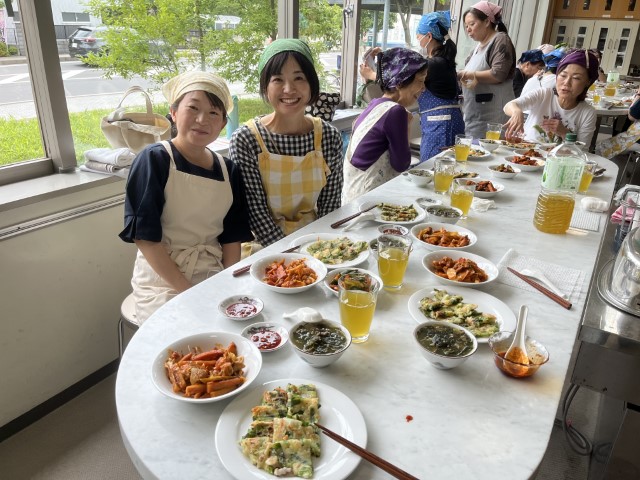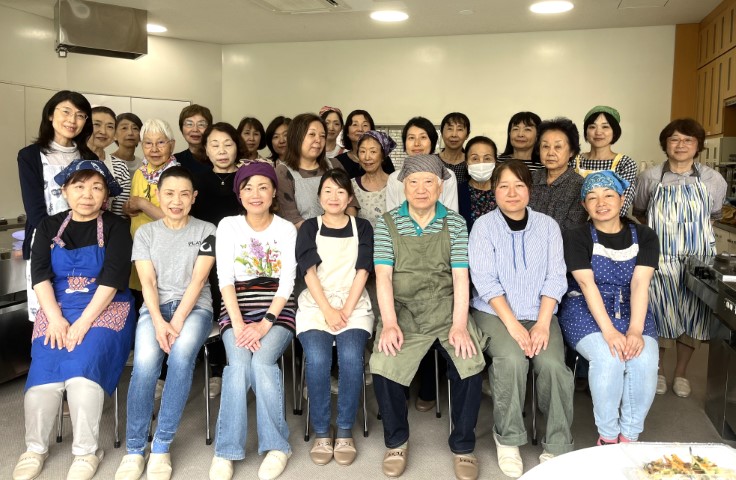 Date and Time: Thursday, June 6, 2024 9:45a.m. ~ 1:00p.m.
Date and Time: Thursday, June 6, 2024 9:45a.m. ~ 1:00p.m.
Venue: Abista Cooking Room
Instructor: Ms. Azumi Harada (Korea)
Participants: 21 individuals (1 AIRA member and 20 non-members) along with 6 staff members, totaling 27 people (No.24-8)
The cooking class was moderated by Ms. Kaku in charge of intercultural lectures. First of all, she introduced the instructor Ms.Harada.
After Ms Harada demonstrated the procedure explaining how to cut the ingredients and cooking key points, the participants started cooking in six groups.
Today’s menu: (1)Cheese dak-kalbi (2)Miyeok-guk (3)Chijimi
The ingredients and seasonings were prepared on each table beforehand. Ms. Harada explained each ingredient, cooking methods, and the amounts of seasonings..
1. Cheese dak-galbi, spicy stir-fried chicken
How to cook: Marinate the chicken in a sweet and spicy Yangnyeom sauce for a while. Heat oil in the pan. First, fry the chicken, and after it is cooked, add sweet potato, green onion, cabbage, and Tteok-bokki (simmered rice cake), and finally put cheese.
The recipe of Yangnyiom sauce, which is made of various kinds of seasonings and spices, was impressive. Cheese dak-kalbi is one of the Korean home dishes. It tastes rich and refreshing and includes meat and a lot of vegetables in one dish.
2. Miyeok-guk, beef seaweed soup
In Korea, Miyeok-guk is traditionally eaten three times a day for a month after giving birth. It’s highly nutritious, contains a lot of minerals, and helps the mother’s recovery. Also, Korean people eat seaweed soup on birthdays to express gratitude to their mothers and the mothers also appreciate the joy of having children. Korean dried seaweed keeps chewy even after being cooked for a long time and gets delicious with sesame and beef. Seasoned simply with salt, this soup is both easy to eat and very tasty.
3. Chijimi (Buchim), pancake with seafood and vegetables
Chijimi is made of a small amount of flour and plenty of other ingredients such as Chinese chive, carrot, squid and shrimp. The baked chijimi has a chewy texture and is eaten with Yangnyeom dipping sauce, which is a mildly hot sauce containing red pepper, garlic, gochu-jang (Korean chili paste), sugar, soy sauce, and other seasonings and spices. The hotness of the sauce varies depending on each household. The sauce which was made today was average hot, but it seemed a little hot for the Japanese.
The participants were eager to learn and expressed interest in trying to cook the dishes at home. They took notes while listening to Ms.Harada’s explanation and asked questions while cooking at each table.
There was a man, who holds cooking classes with friends, cooked Korean dishes for the first time. He said he was surprised at the variety of seasonings used in each cuisine.
(Translated by Chizu Yamaguchi)

